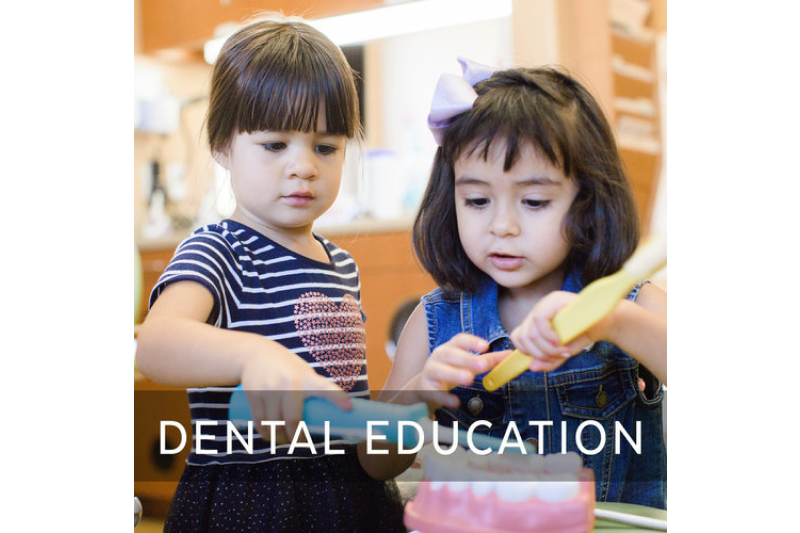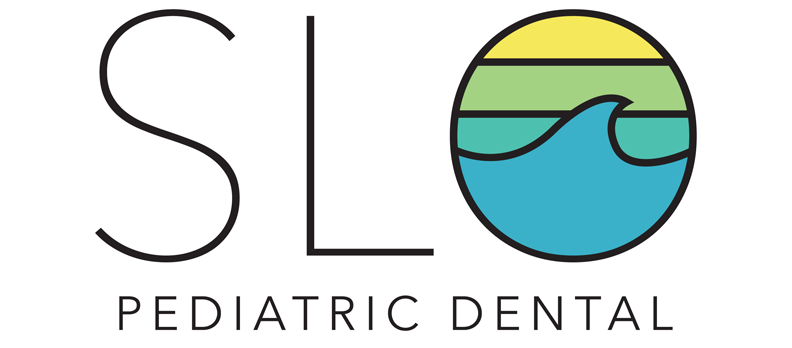Dental Education in San Luis Obispo

At SLO Pediatric Dental, we are committed to going above and beyond the expectations of our parents and patients. Along with helping ensure the proper growth and development of our patients, we put an extra emphasis on educating our parents and patients throughout our ongoing relationship together. Below is important information from the American Academy of Pediatric Dentistry to educate you and your child concerning pediatric dental health and procedures. For even more information, visit the AAPD’s website.
THE IMPORTANCE OF PRIMARY (BABY) TEETH
It is very important to maintain the health of the primary (baby) teeth. Neglected cavities can and frequently do lead to problems which affect developing permanent teeth. Primary teeth are important for (1) proper chewing and eating, (2) providing space for the permanent teeth and guiding them into the correct position, and (3) permitting normal development of the jaw bones and muscles. Primary teeth also affect the development of speech and add to an attractive appearance. While the front 8 teeth last until 6-7 years of age, the back teeth (cuspids and molars) are not replaced until age 10-12.
BABY BOTTLE TOOTH DECAY
One serious form of decay among young children is baby bottle tooth decay. This condition is caused by frequent and long exposure of an infant’s teeth to liquids that contain sugar. Among these liquids are milk (including breast milk), formula, fruit juice and other sweetened drinks.
Putting a baby to bed for a nap or at night with a bottle containing anything other than water can cause serious and rapid tooth decay. Sweet liquid pools around the child’s teeth giving bacteria an opportunity to produce acids that attack tooth enamel. If you must give your baby a bottle as a comforter at bedtime, it should contain only water.
After each feeding wipe the baby’s gums and teeth with a damp washcloth or gauze pad to remove plaque. The easiest way to do this is to sit down and place the child’s head in your lap, or lay the child on a changing table. Whatever position you use, be sure you can see into the child’s mouth easily.
ERUPTION OF YOUR CHILD’S TEETH
Children’s teeth begin forming under the gums before birth. Usually at 6-8 months of age, the lower central incisors begin to erupt followed closely by the upper central incisors. Although all 20 primary teeth usually appear by age 3, the pace and order of their eruption varies.
Permanent teeth begin appearing around age 6, starting with the first molars and lower central incisors. This process continues until approximately age 21. Adults have 28 permanent teeth, or up to 32 including the third molars (or wisdom teeth).
SEAL OUT DECAY
A sealant is a white acrylic material that is applied to the chewing surfaces (grooves) of the back teeth (premolars and molars), where four out of five cavities in children are found. This sealant acts as a barrier to food, plaque, and acid, thus protecting the decay-prone areas of the teeth. They are quickly and painlessly applied to teeth that are free of decay thus making it a very comfortable procedure for the patient. Sealants are checked at every 6 month checkup and may easily be replaced if missing or broken, though they generally last for several years. Children should avoid chewing on hard candies and ice as this can chip or break the sealants. As a preventive mechanism, sealants are an important part of a cavity-free generation.
